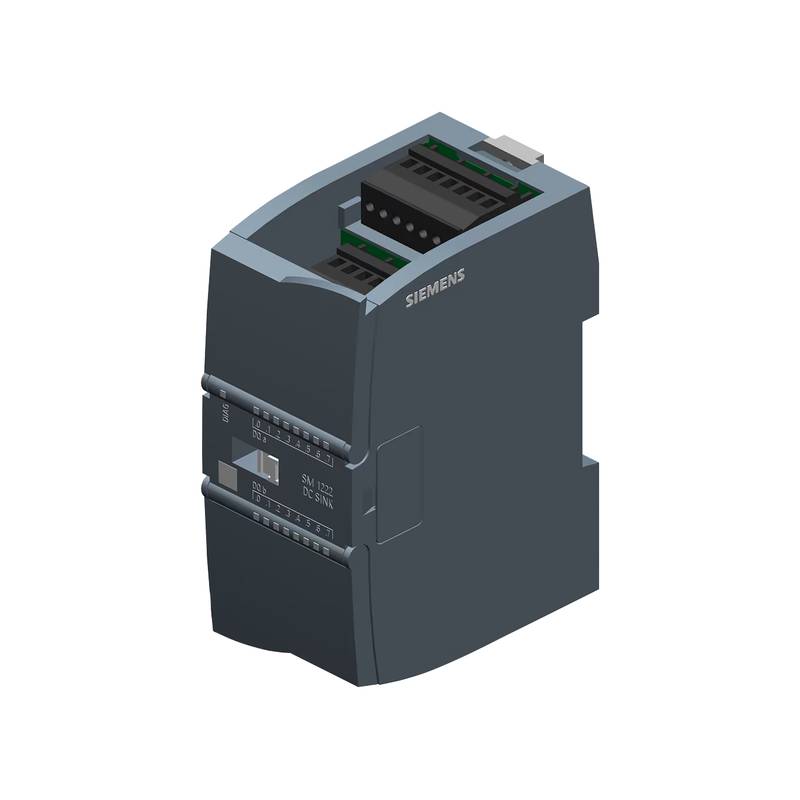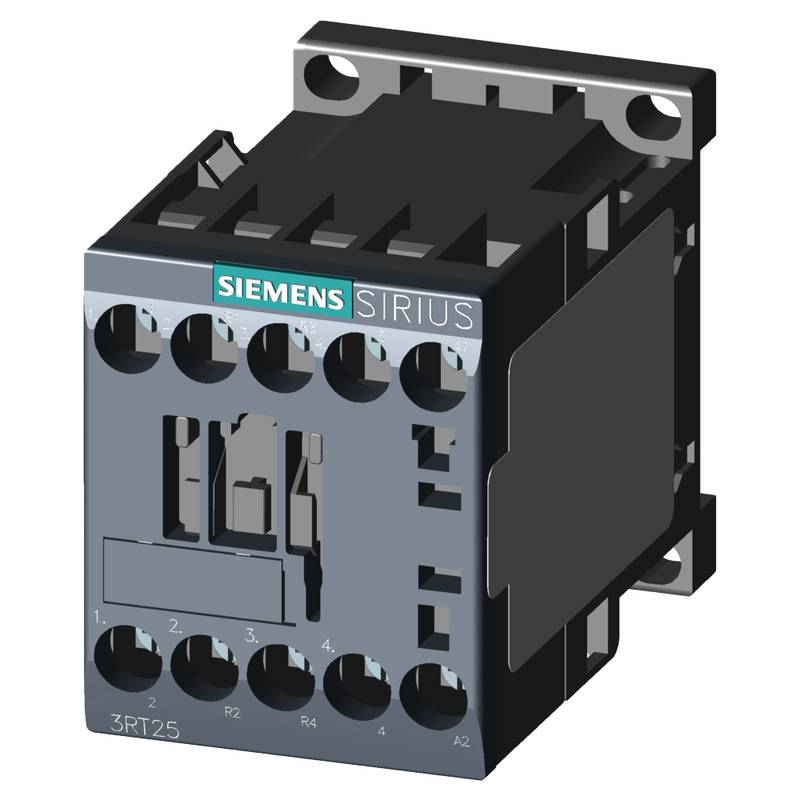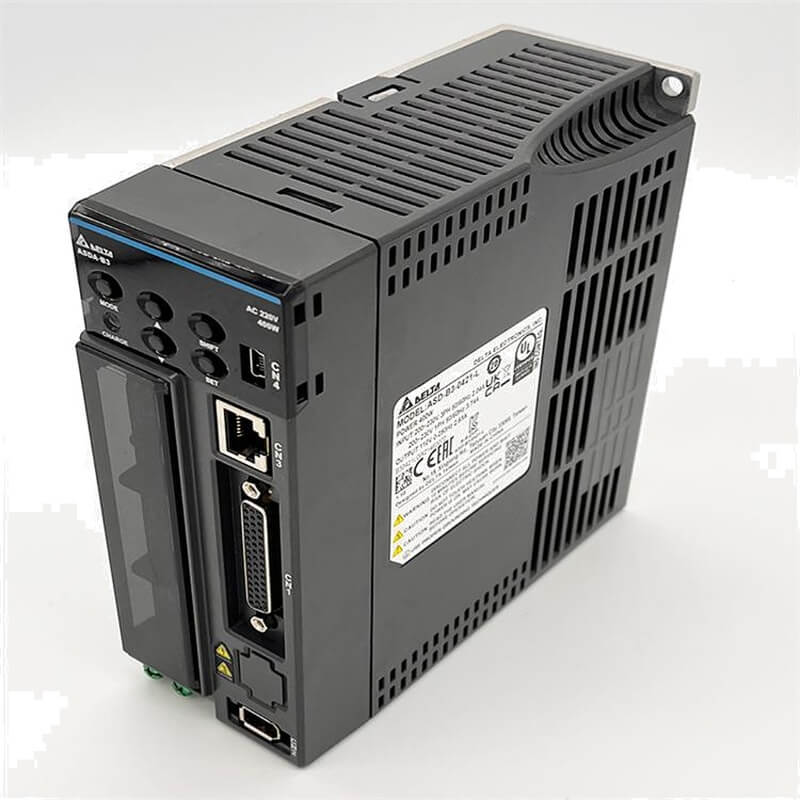
The Siemens 6ES7221-1BH32-0XB0 is a robust 16-point standard digital input expansion module designed for the SIMATIC S7-1200 programmable logic controller (PLC) system. This module offers critical advantages in industrial automation, including high channel density for efficient space utilization, robust noise immunity for reliable operation in harsh environments, and seamless integration within the TIA Portal engineering framework. Its core features include 16 digital inputs, a 24V DC voltage supply, and a compact form factor, making it an ideal choice for a wide range of discrete control applications. The module's technical parameters, such as its input voltage range and response times, are optimized for demanding industrial settings.
Siemens 6ES7221-1BH32-0XB0 Product Specifications
| Feature | Specification |
| :---------------------- | :------------------------------------------ |
| Module Type | Digital Input Expansion Module |
| Number of Inputs | 16 |
| Input Voltage | 24V DC |
| Input Type | Standard Digital Inputs |
| Compatibility | SIMATIC S7-1200 PLC System |
| Connection Type | Push-in terminals |
| Dimensions (W x H x D) | 45 mm x 100 mm x 75 mm |
| Operating Temperature | -20 °C to +60 °C |
| Protection Class | IP20 |
| Isolation | 500V AC (between channels and backplane) |
Core Features & Market Positioning
The Siemens 6ES7221-1BH32-0XB0 distinguishes itself through its high channel density, offering 16 discrete inputs within a compact footprint, thereby maximizing panel space and reducing overall system size. This efficiency is a significant differentiator in industries where space is at a premium. Its robust design ensures superior noise immunity, a critical factor for reliable data acquisition in electromagnetically noisy industrial environments, leading to reduced downtime and enhanced process stability. Positioned as a standard, yet high-performance, input module, it offers a cost-effective yet reliable solution for numerous automation tasks, aligning with Siemens' reputation for quality and long-term industrial value. The seamless integration with the TIA Portal further enhances its market appeal by simplifying configuration, programming, and diagnostics, streamlining the engineering workflow for automation professionals.
Key Application Scenarios
This 16-point digital input expansion module is extensively utilized in machine building and factory automation for monitoring discrete events. Common applications include detecting the presence or absence of components on a conveyor belt, confirming the open or closed status of safety gates, and receiving signals from limit switches on robotic arms or machinery. It is also integral to process control systems for monitoring sensor states, such as acknowledging the activation of push buttons or monitoring the status of simple level switches. Furthermore, its reliability makes it suitable for environmental monitoring applications, such as receiving signals from status indicators or basic alarm inputs within a larger industrial network.
Practical System Integration Guidance
Integrating the Siemens 6ES7221-1BH32-0XB0 into a SIMATIC S7-1200 system is straightforward due to its plug-and-play design. The module utilizes push-in terminals, which eliminate the need for tools during wiring, significantly speeding up installation and reducing the risk of wiring errors. For system setup, the module is easily configured within the TIA Portal software. After physically connecting the module to the PLC's backplane and wiring the digital input signals to the respective terminals, users can assign the input addresses within the TIA Portal project. The system automatically recognizes the hardware, allowing for direct configuration of the input behavior, such as setting filter times if required, ensuring precise signal acquisition tailored to the specific application needs.
Operation and Risk Mitigation
Operating the Siemens 6ES7221-1BH32-0XB0 module requires adherence to standard industrial electrical safety practices. Ensure all power is de-energized before making or breaking connections to prevent electrical shock and equipment damage. The module is designed with internal protection against transient voltages, but it's crucial to ensure that the connected input devices operate within the specified 24V DC range and that proper grounding is maintained for the overall system. Overloading the inputs or connecting voltages outside the specified range can lead to module failure. In the event of operational anomalies, consult the SIMATIC S7-1200 system diagnostics within TIA Portal, which provides detailed error messages and status indicators to facilitate troubleshooting and swift resolution of issues.
Scalability & Long-Term Value
The Siemens 6ES7221-1BH32-0XB0 offers excellent scalability within the SIMATIC S7-1200 platform. Users can easily expand their digital input capacity by adding multiple identical modules or combining them with other I/O modules to meet evolving automation requirements. Its compatibility with the entire S7-1200 range ensures that investments in existing hardware and programming are preserved. As part of Siemens' commitment to Industry 4.0, the S7-1200 system, including this input module, is designed for seamless integration with higher-level systems and IIoT platforms. This facilitates data collection, advanced analytics, and remote monitoring, ensuring the long-term value and future-readiness of automation projects.
Frequently Asked Questions (FAQs)
What is the maximum input frequency for the Siemens 6ES7221-1BH32-0XB0?
The maximum input frequency for this module is dependent on the configured signal delay.
For a signal delay of 0.2 ms, the maximum input frequency is 2.5 kHz.
However, for a standard signal delay of 3 ms, the maximum input frequency is 160 Hz.
Can the Siemens 6ES7221-1BH32-0XB0 be used with older Siemens PLC systems?
No, this module is specifically designed for the SIMATIC S7-1200 PLC family.
It relies on the communication protocols and backplane architecture of the S7-1200.
Integration with older systems like S7-300 or S7-400 would require different interface modules or gateways.
What is the function of the "standard digital input" designation?
Standard digital inputs are designed for general-purpose signals like switches and sensors.
They have specific voltage thresholds for recognizing a 'high' or 'low' state.
This designation implies typical industrial signal levels and response times suitable for most automation tasks.
How do I wire the Siemens 6ES7221-1BH32-0XB0?
Wiring is done using the integrated push-in terminals for quick and tool-free connection.
Connect the 24V DC power supply to the module's power terminals and the input signals to the designated digital input terminals.
Always ensure the PLC is de-energized before performing any wiring to prevent damage or injury.
What diagnostic information is available for this module?
Diagnostic information is accessible through the TIA Portal software.
The PLC's diagnostic buffer will record any faults or status changes related to the module.
LED indicators on the module itself provide immediate visual feedback on channel status and module health.
Is the Siemens 6ES7221-1BH32-0XB0 suitable for high-speed counting applications?
While it has a decent frequency response, it's considered a standard digital input.
For dedicated high-speed counting or encoder feedback, Siemens offers specialized counter modules.
However, for basic pulse counting up to 160 Hz, it can be utilized effectively.
What is the warranty period for the Siemens 6ES7221-1BH32-0XB0?
Siemens typically offers a standard warranty on its industrial automation products.
The exact warranty period can vary based on region and purchase agreements.
It is recommended to check the warranty terms with your specific Siemens distributor or partner.
How does the TIA Portal simplify the integration of this module?
TIA Portal offers automatic hardware detection and configuration for the module.
It provides a unified environment for programming, wiring diagrams, and diagnostics.
This reduces engineering time and minimizes potential errors during project setup.
What environmental conditions should I consider when installing this module?
The module operates within a temperature range of -20 °C to +60 °C and has an IP20 protection class.
Avoid installing it in areas with excessive dust, moisture, or corrosive substances.
Ensure adequate ventilation within the control cabinet to maintain optimal operating temperatures.
What are the typical current consumption details for this module?
The module itself has a low current draw from the backplane.
The primary current consumption will be from the external 24V DC power source powering the connected input devices.
Refer to the module's technical manual for precise backplane current draw figures.























